Escher- Reflections, Crystals & Platonic Solids
I want to share some more examples of the works of M.C.Escher, many of which I was able to see at the Between Two Worlds Exhibition at the National Gallery Victoria. Let us first take a look at Escher’s ideas about how he wanted to portray Reflections.
Escher was intrigued by reflections, which were a recurring theme in his work. His first images on the subject were self-portraits that he made using a reflective sphere in the early 1920s.(Taken from the Exhibition Label) This lithographic example (Hand with Reflecting Sphere) however was made in 1935.
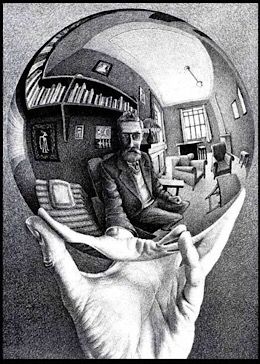
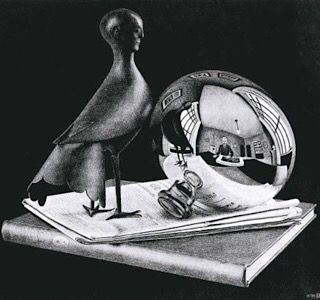
Escher explored reflections in many ways using mirrors, flat surfaces of water, dew drops (as seen below) and even the human eye. (Taken from the Exhibition Label)
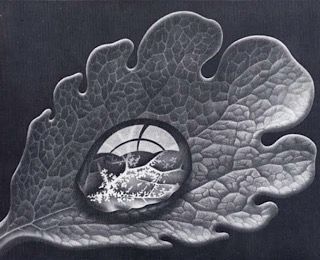
Importantly, Reflective surfaces provided Escher with an important motif through which he could unite worlds, play with spatial realities and link the possible and the impossible. (Taken from the Exhibition Label). His Three Worlds lithograph is one such example.
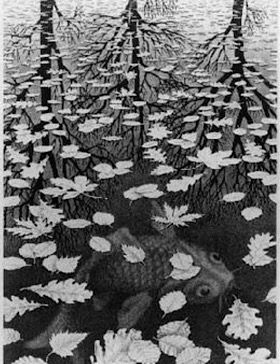
Escher was fascinated by the symmetry and regularity of Platonic Solids. These shapes are 3D spatial forms with flat faces and straight edges, with every face being a regular polygon of the same size and shape....From the late 1940s Escher made a series of works featuring the five Platonic solids as well as Crystals and other, more complex, geometric spatial figures of his own invention. (Taken from the Exhibition Label) This is the colour version of Escher’s Stars wood engraving done in 1948.
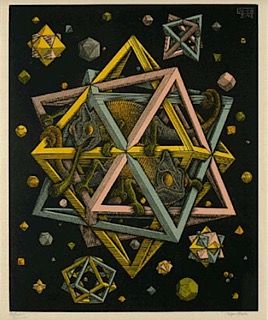
And this is a wood engraving of a Double Planetoid
(1949) in green, dark blue black and white, printed from 4 blocks (second state).
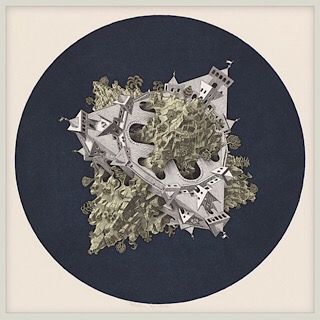
Escher also came up with another invention that not only reveals his mathematical ability but also his innate playfulness- a wheel-shaped creature he called the wentelteefje (Curl-Up) which he made the subject of a lithograph in 1951. (Taken from the Exhibition Label)
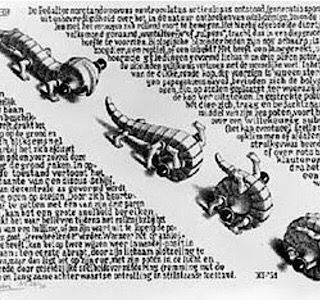
M.C.Escher's genius most likey stems from his belief that:
Only those who attempt the absurd...will achieve the impossible. ...
